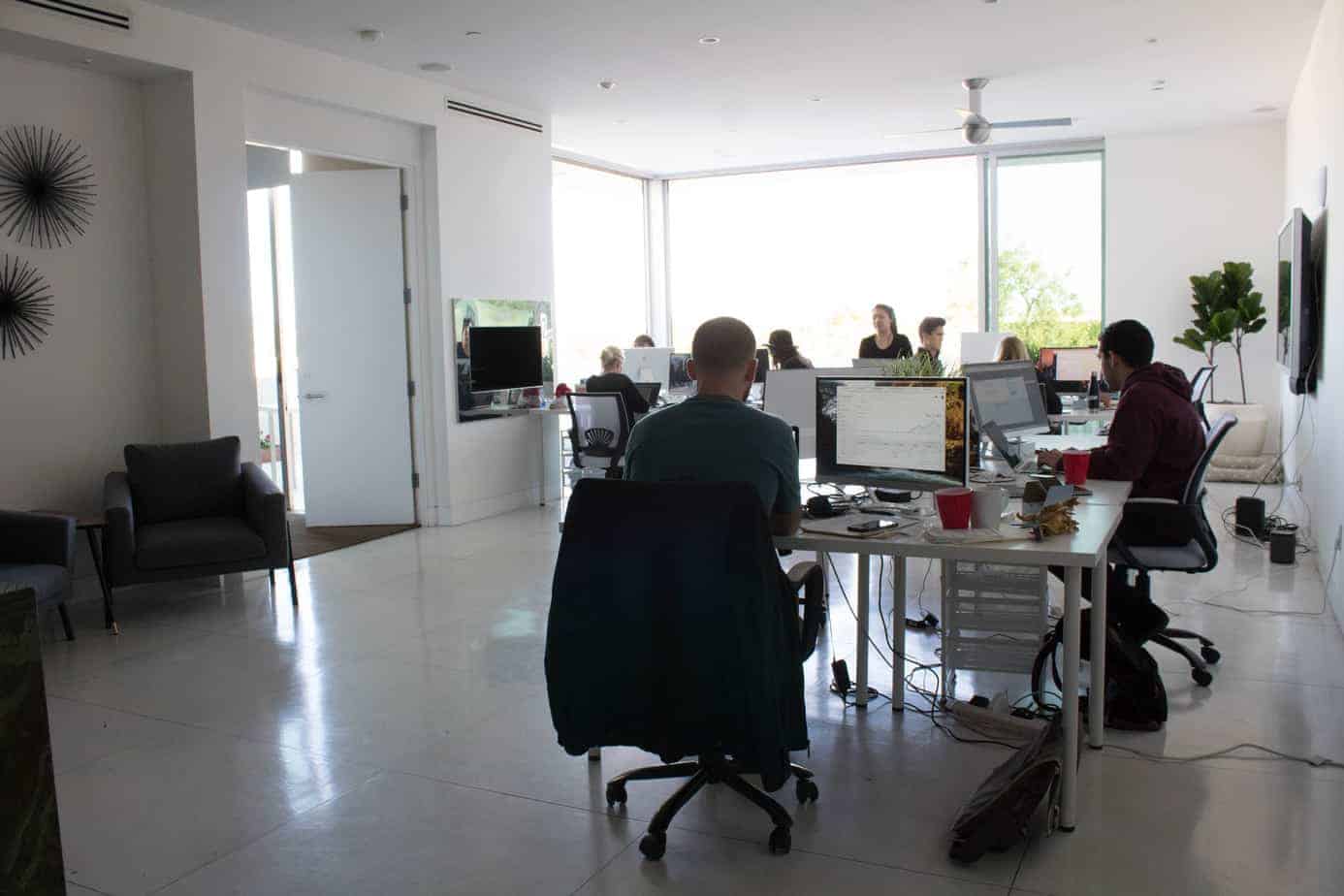We spent one-third of our lives at work. Some of us spend more time in an office chair than a bed.
So today’s topic? Chairs.
They are one of the most overlooked, undervalued elements of a workplace.
Take our startup company for an example. Our first office chairs were a Black Friday deal from Office Max (retail: $119). These chairs were purchased out of necessity (we needed seats for 4 employees), timeliness (Black Friday), and budget (#startuplife).
Our second chairs were the highest rated, most economically priced chairs on Amazon (retail: $85). These task chairs were selected out of necessity (we needed seats for 17 employees), because they were aesthetically pleasing to match our office vibe (all white), and budget (#startuplife).
While these chairs met our aesthetic expectations, they fell well short of fulfilling basic human ergonomic needs.
Which leads us to our recent decision to purchase Herman Miller Aeron chairs (Retail: $1,495) for all of our employees (currently a team of 9).
The reasoning is pretty simple and straightforward. We invest thousands of dollars in top-of-the-line computer equipment. Why not invest thousands of dollars in a piece of furniture that has severe implications on personal health and wellness?

To be clear: there’s a lot of subsequent questions I’ve had to ask myself since this purchase.
1. Purchasing these chairs is our largest one-time expense we’ve had in our business. By no means is buying a $1,500 chair an easy decision. Was it the right one?
2. I’ve conducted hundreds of job interviews. I’ve never been asked what kind of chair we sit in. Will any candidate ever ask that question? (I believe candidates should!)
3. What’s next?
It’s the last question of “what’s next” that induces some feelings of buyer’s remorse. Wellness doesn’t stop with chairs. Sitting on clouds isn’t the end solution. The remorse stems from how much more work we have to do to make our workplace an acceptable setting for health.
Standing desks. Walking meetings. Minimizing sedentary nature. The list goes on beyond chairs.
Chairs are an important workplace element. That’s why we invested in them. But the real reason we made the investment was to commit to creating a healthy workplace.
That’s worth the investment in itself.
Other notes, and FAQs about the journey.
We selected the Herman Miller Aeron chair for a few reasons, without any research into other chairs on the market. Those reasons included:
1. The Aeron chair holds it’s value very well. Check out OfferUp. If we ever decided to go in a different direction, we could recoup a chunk of our investment by reselling them.
2. The Aeron chair is universally known. I’ve never sat in one (none of our employees have…they arrive tomorrow), but yet, the Herman Miller and the Aeron brands are so strong that the majority of us know about the existence of both. It’s America’s best selling chair for a reason.
3. The Aeron is featured in the Museum of Modern Art permanent collection recognize it’s design. That says something. Most office chairs are not on display for their contribution to society.
Office chairs say a lot about a company culture.
More so than I realized. Here’s what I found when I asked several friends and colleagues about the chair they sit in at work…
1. One family member said the chair he sits in at work has a ripped hole in it. Ironically, his company is one of the cheapest, stingiest companies I know of (based on what I’ve heard from my family member). That ripped chair is very symbolic.
2. Some people I spoke to fell in the category of “we went to Office Max, sat in chairs, found a deal, and purchased a few. I have no idea what kind of chair they are.” I find that these company cultures are conscious of budget and value comfort – but don’t obsessively prioritize ergonomics. That’s fine, and that’s the majority of companies out there.
3. Everyone knows someone with a nice chair. When I would ask people what chair they would sit in, they would inevitably bring up someone with nice chairs. “Oh, the architects have sweet chairs.” I find that most of the time, the companies have sweet chairs also have sweet company cultures. At least in the examples presented to me.
A few resources that helped rationalize the investment.
1. The book, “The Office: a facility based on change” – written in 1968 by Robert Propst. The book discusses issues in the workplace in detail. The key realization: the workplace has a short history. It’s up to us to write the next chapter in what the workplace looks like.
2. The article, “Killer Chairs: How Desk Jobs Ruin Your Health” published by the Scientific Journal in 2014. This article helps you realize that there is so much more to workplace wellness than chairs.
3. Goodmans. They’re who we purchased our chairs from. They’re a wealth of knowledge, and have an excellent staff.
The Herman Miller Aeron chairs arrive tomorrow. We still have not sat in one. We shall see how this plays out.







